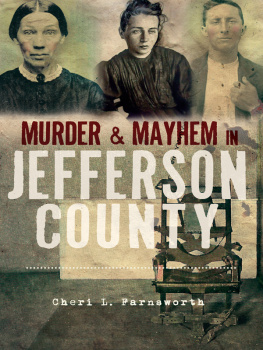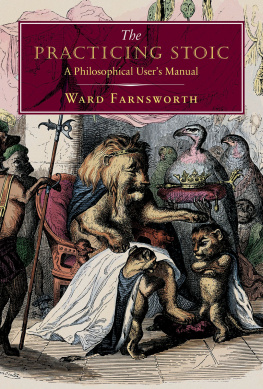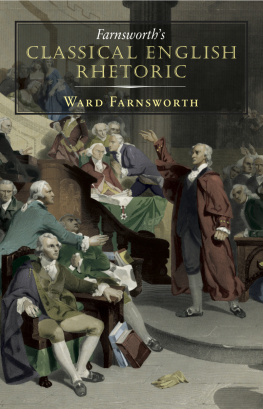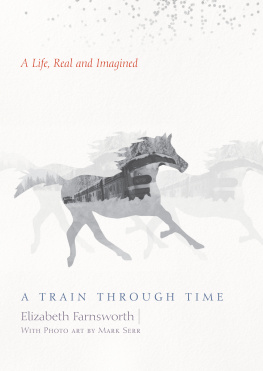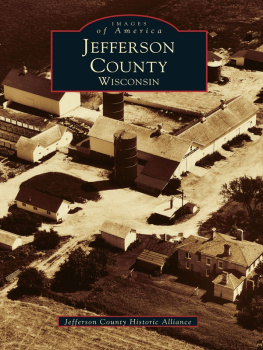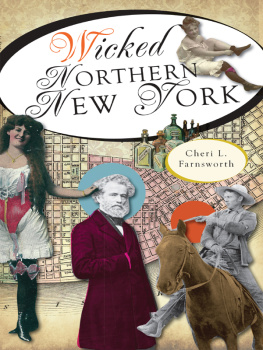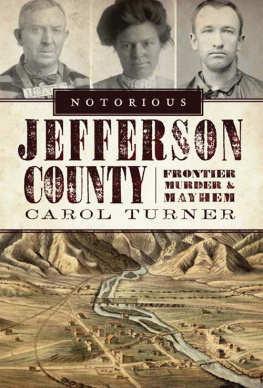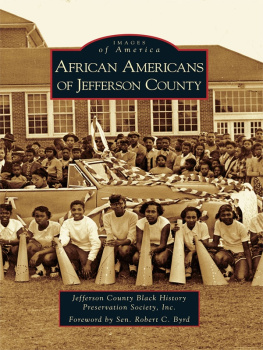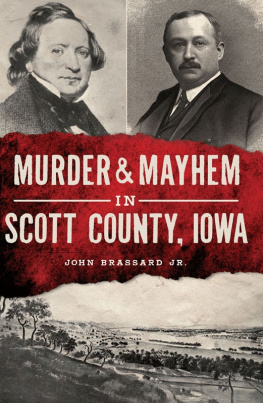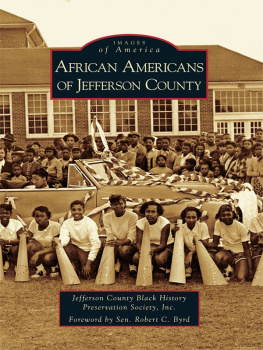

Published by The History Press
Charleston, SC 29403
www.historypress.net
Copyright 2011 by Cheri L. Farnsworth
All rights reserved
Front cover images: Woman in center, portrait of Mary Farmer, 1908. Printed with permission from the Watertown Daily Times. Electric chair at Auburn Prison. Published by W.H. Zepp, circa 1914. From the Library of Congress Prints and Photographs Division. Photograph of carriage. From the collection of Robert and Jeannie Brennan, Sackets Harbor.
First published 2011
ebook edition 2012
ISBN 978.1.61423.433.3
Library of Congress Cataloging-in-Publication Data
Farnsworth, Cheri, 1963
Murder and mayhem in Jefferson County / Cheri L. Farnsworth.
p. cm.
Includes bibliographical references.
print edition ISBN 978-1-59629-867-5
1. Murder--New York (State)--Jefferson County--History--Case studies. 2. Murderers--New York (State)--Jefferson County--History--Case studies. 3. Jefferson County (N.Y.)--History, Local. I. Title.
HV6533.N5F38 2011
364.1523097475709034--dc22
2011007655
Notice: The information in this book is true and complete to the best of our knowledge. It is offered without guarantee on the part of the author or The History Press. The author and The History Press disclaim all liability in connection with the use of this book.
All rights reserved. No part of this book may be reproduced or transmitted in any form whatsoever without prior written permission from the publisher except in the case of brief quotations embodied in critical articles and reviews.
This book is dedicated to:
Joshua & Wilbur Rogers
Henry Dimond
Charles Wenham
Emma Baritau
Sarah Conklin
Julia Powell
Ella Allen
Mary Ward
Mary Crouch
Mary Daly
Mary & William Ockwood
Sarah Brennan
Roy & Jessie Burlingame
Rest in peace.
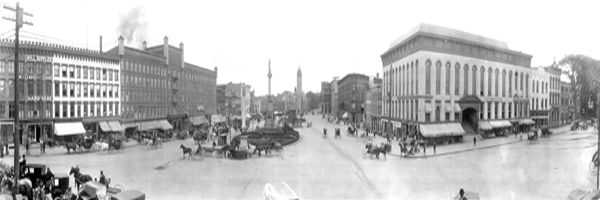
Panoramic view of Public Square, Watertown, taken by Haines Photo Company, circa 1909. From the Library of Congress Prints and Photographs Division.
CONTENTS
PREFACE
While every effort was made to obtain original photographs or sketches of the individuals mentioned in this book, many of the images used in news articles written one to two hundred years ago have long since been destroyed or lost. And, while the vast majority of the countys voluminous newspaper archives have now been stored on microfilm or digitized, oftentimes the pages I found with photographs pertinent to this book did not scan well enough to republish. I was fortunate, however, to find some gems that did scan quite nicely, thanks to Lisa Carr, the Watertown Daily Times librarian, who assisted me in those efforts. Photographs and newspaper images in this book with captions that read, With permission from the Watertown Daily Times, were taken from issues of the Watertown Re-Union and the Watertown Herald and are part of a collection held by the Watertown Daily Times. They were photographed and printed here with permission from the Times.
Because there were no photographs available for some of the stories, in a few cases, I improvised. From my personal collection, I carefully chose original antique photographs of unidentified locations and individuals who resembled what I perceived the victims and killers looked like based on obscure newspaper images and descriptive newspaper accounts. In the few cases where neither of those was available (like the first story from 1828), I had no choice but to use my imagination (and a bit of artistic license). The caption for such images simply says: Courtesy of the author.
ACKNOWLEDGEMENTS
Id like to thank my commissioning editor at The History Press, Whitney Tarella, and my project editor, Amber Allen, for their continued enthusiasm and expertise; the New England sales rep, Dani McGrath; Jamie-Brooke Barreto of sales and marketing; and my publicist, Katie Parry, and assistant publicist, Dan Watson. Theyve all been a joy to work with on this and earlier titles.
Many thanks to Watertown Daily Times librarian Lisa Carr, for helping me find a number of images used in this book and for making it so fun (laughing about the big mess we were making). It was a dirty job, but someone had to do it, right? Another excellent photograph was kindly provided by Jeannie and Robert Brennan, the Sackets Harbor village historiansa big thank-you to them for taking the time to locate it (and to Connie and Larry Barone for seeing that I got it). Id also like to thank Town of Brownville historian June McCartin, Village of Antwerp historian Jean Hendrickson and Jefferson County historian James Ranger for responding to my queries. The Jefferson County Historical Society calls the Paddock Mansion in Watertown, New York, its home. If you havent visited, you must. I wrote about the Paddock Mansion in Haunted Northern New York, Volume 4, after visiting several times with the WPBS Folklore & Frost Tour and finding myself in awe of the many displays. The mansion is a wonderland for history buffs and researchers, and Id like to give the staff a thumbs-up for their efforts in preserving county history. I look forward to future visits, when I research Wicked Northern New York and North Country Disasters.
Most of all, I thank my husband, Leland Farnsworth II, for his encouragement, love and support. With all of the unexpected, emotional ups and downs this line of work sometimes brings, he remains calm, cool and collected, where others would cave; I would be lost without his strength. I thank my lucky stars every single day (not just each time I write a new book) for my beautiful daughters: Michelle, Jamie, Katie and Nicole. And I can never thank my parents, Tom and Jean Dishaw, enough for everything they do and have done, nor will I ever stop trying. (Special thanks for the you-know-what [wink] that helped make this book a reality.) Other essential shout-outs go to my in-laws, Carol and Lee Farnsworth; my siblings, Tom Dishaw, Christina Walker and Cindy Barry; and their families: Ed, Rachel and Ryan Barry, Danon Hargadin and Heather, Amanda, Bryan, Lindsey and Cade Alexander Walker.
INTRODUCTION
I like to think that were a pretty tough lot up here in the North Country. We joke that when it drops to forty below and even hell freezes over, school might be delayed a measly two hours if were lucky. Thats how accustomed we are to extreme temperatures. But its not just the climate we have to worry about in the winter months. Its the shorter days and decreased daylight of that time of year. An estimated one in ten people who live in northern climates like ours are plagued by serious mood changes each year between late fall and spring when the days are shorter. Its proper name is Seasonal Affective Disorder (SAD), but in its milder form, we might call it the winter blues. Severe cases of SAD, which is believed to manifest due to daylight and vitamin D deficiencies, exhibit symptoms such as depression, ranging from mild to suicidal; lethargy; lack of energy; hopelessness, anxiety, lack of tolerance, irritability; and social problems. Why am I telling you all of this? Because, besides the late summer murder-suicide of Jessie and Roy Burlingame in 1922 and the suspicious drowning deaths of Mary and William Ockwood in May 1897, all other cases in this book involved cold-weather murders. I cant help but wonder about a correlation between SAD and suicidal or homicidal tendencies in those most severely afflicted by it. But theres an expression northern New Yorkers have long been familiar with that mimics the symptoms of SAD and perhaps makes even more sense as a possible element in crimes of the pastcabin fever.
Next page
